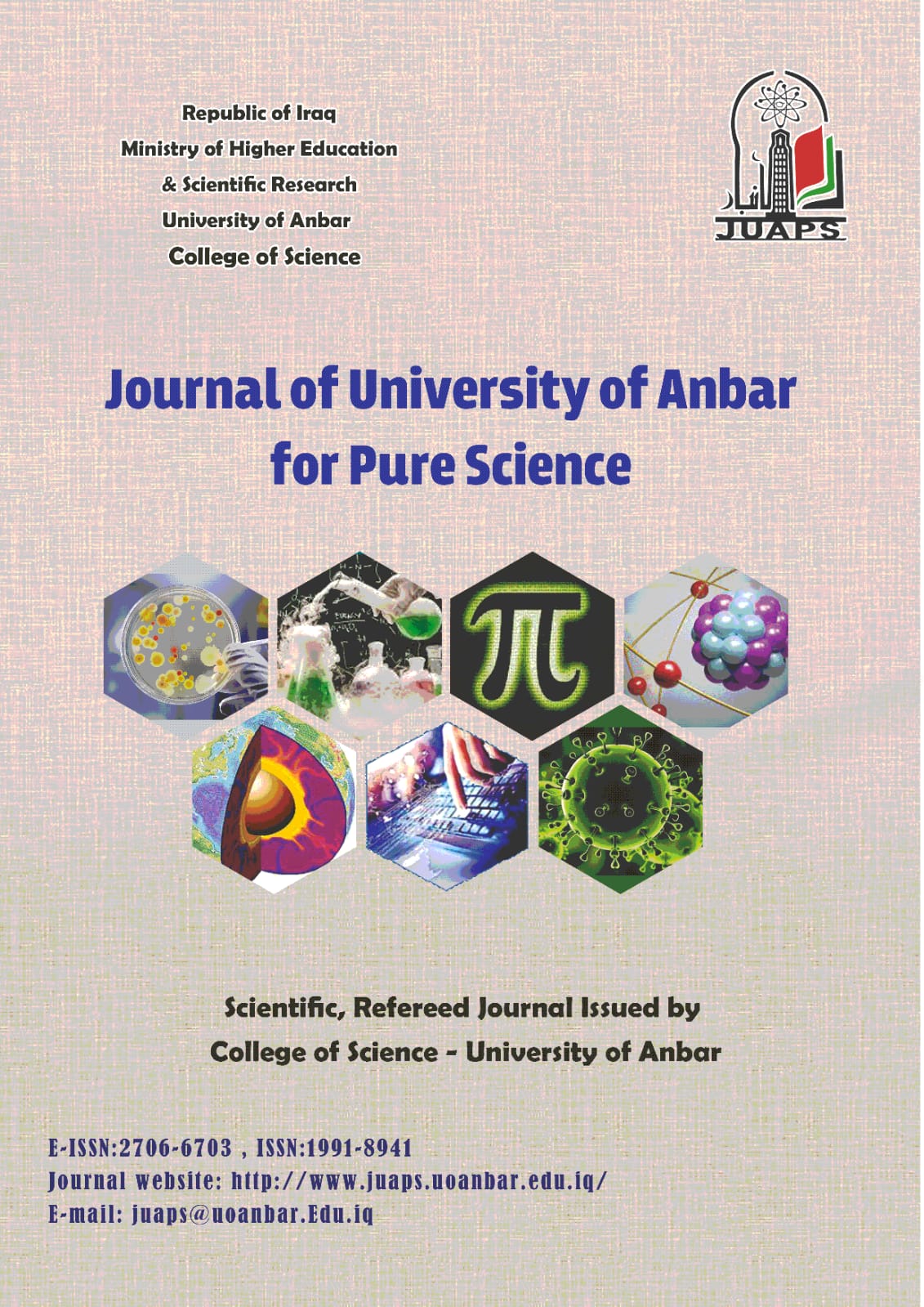Abstract
The aim of this study was to determined the inhibitory effect of different concentrations of garlic extract in vitro. Thirty clinical isolates of Staphylococcus aureus were obtained from patients suffering from different skin infections in Ramadi General Hospital During the period between October 2007 to February 2008, as well as the control strain of S. aureus (ATCC 25923). Antimicrobial effects of garlic was detected by three different methods, disc diffusion method, well diffusion method, minimumal inhibitory concentration (MIC) and minimumal bactericidal concentration (MBC).
Out of Thirty clinical isolates of Staphylococcus aureus, 20 (66.6%) and control strain were identified as highly susceptible with 100mg/ml of garlic juice, 8 isolates (26.6%) showed intermediate susceptible and no detectable activity with the lower concentrations of garlic juice as well as 2 isolates (6.6%) were resistante (no zone of inhibition )was observed with concentrated garlic juice. 3.2 mg/ml of garlic juice was the minimumal inhibitory concentration and minimumal bactericidal concentration for all tested isolates.
It is concluded that the higher concentrated of garlic juice which had a strong inhibitory activity on Staphylococcus aureus .Further in vivo studies are necessary.
Out of Thirty clinical isolates of Staphylococcus aureus, 20 (66.6%) and control strain were identified as highly susceptible with 100mg/ml of garlic juice, 8 isolates (26.6%) showed intermediate susceptible and no detectable activity with the lower concentrations of garlic juice as well as 2 isolates (6.6%) were resistante (no zone of inhibition )was observed with concentrated garlic juice. 3.2 mg/ml of garlic juice was the minimumal inhibitory concentration and minimumal bactericidal concentration for all tested isolates.
It is concluded that the higher concentrated of garlic juice which had a strong inhibitory activity on Staphylococcus aureus .Further in vivo studies are necessary.
Keywords
Antibacterial
Garlic
S.aureus.
Abstract
اجريت الدراسة باستعمال 30 عزلة من بكتريا العنقوديات الذهبية Staphylococcus aureus ۥجمعت من مرضى يعانون من الالتهابات الجلدية المختلفة في مستشفى الرمادي العام للفترة من تشرين الاول 2007 ولغاية شباط 2008,واستخدمت عزلة السيطرة ( (ATCC25923 S. aureus لغرض المقارنة. أستخدمت ثلاث طرق لدراسة الفعالية التثبيطية لمستخلص الثوم وهي (طريقة الانتشار حول القرص، طريقة الانتشار حول الحفر وطريقة قياس التركيز المثبط والقاتل الادنى).
أظهرت نتائج الدراسة بأن 20(66.6٪) عزلة من بكتريا العنقوديات الذهبية بالاضافة الى عزلة السيطرة حساسية عالية عند التركيز (100)ملغم/مل لمستخلص الثوم, واظهرت 8(26.6٪) عزلات متوسطة الحساسية عند التركيز (75)ملغم/مل لمستخلص الثوم, في حين لم تظهر التراكيز المخففة لمستخلص الثوم فعالية تثبيطية تجاه هذه البكتريا, ومن نتائج الدراسة ان عزلتين ( 6.6٪) من بكتريا العنقوديات الذهبية كانت مقاومة لجميع التراكيز. أظهر التركيز 3.2ملغم/مل لمستخلص الثوم المثبط والقاتل الادنى ولجميع عزلات الدراسة. نستنتج من خلال هذه الدراسة ان التركيز العالي لمستخلص الثوم له فعالية تثبيطية عالية تجاه بكتريا العنقوديات الذهبية Staphylococcus aureus. هناك حاجة لدراسة الفعالية التثبيطية لمستخلص الثوم داخل الجسم الحي.
أظهرت نتائج الدراسة بأن 20(66.6٪) عزلة من بكتريا العنقوديات الذهبية بالاضافة الى عزلة السيطرة حساسية عالية عند التركيز (100)ملغم/مل لمستخلص الثوم, واظهرت 8(26.6٪) عزلات متوسطة الحساسية عند التركيز (75)ملغم/مل لمستخلص الثوم, في حين لم تظهر التراكيز المخففة لمستخلص الثوم فعالية تثبيطية تجاه هذه البكتريا, ومن نتائج الدراسة ان عزلتين ( 6.6٪) من بكتريا العنقوديات الذهبية كانت مقاومة لجميع التراكيز. أظهر التركيز 3.2ملغم/مل لمستخلص الثوم المثبط والقاتل الادنى ولجميع عزلات الدراسة. نستنتج من خلال هذه الدراسة ان التركيز العالي لمستخلص الثوم له فعالية تثبيطية عالية تجاه بكتريا العنقوديات الذهبية Staphylococcus aureus. هناك حاجة لدراسة الفعالية التثبيطية لمستخلص الثوم داخل الجسم الحي.
